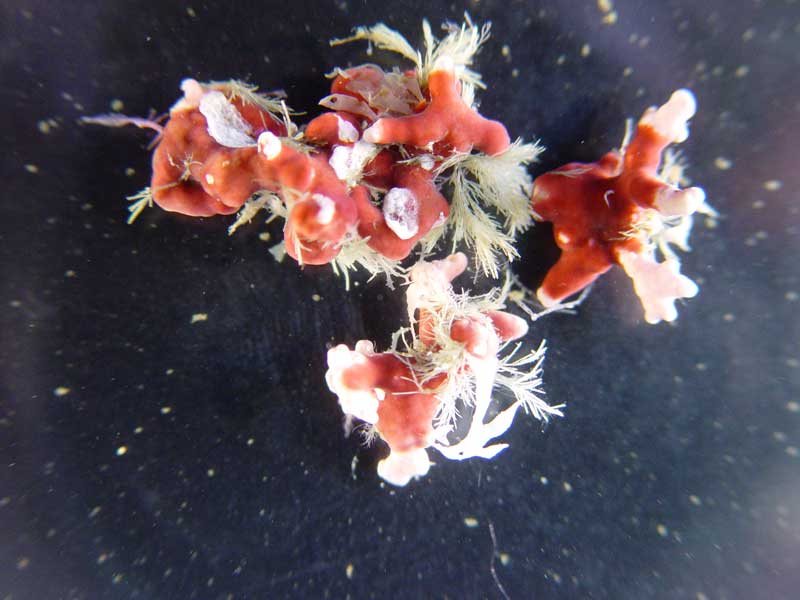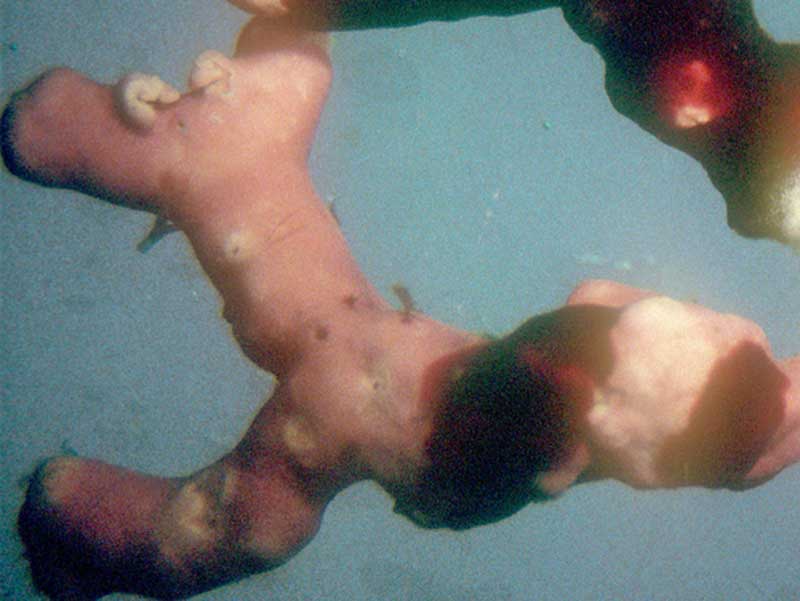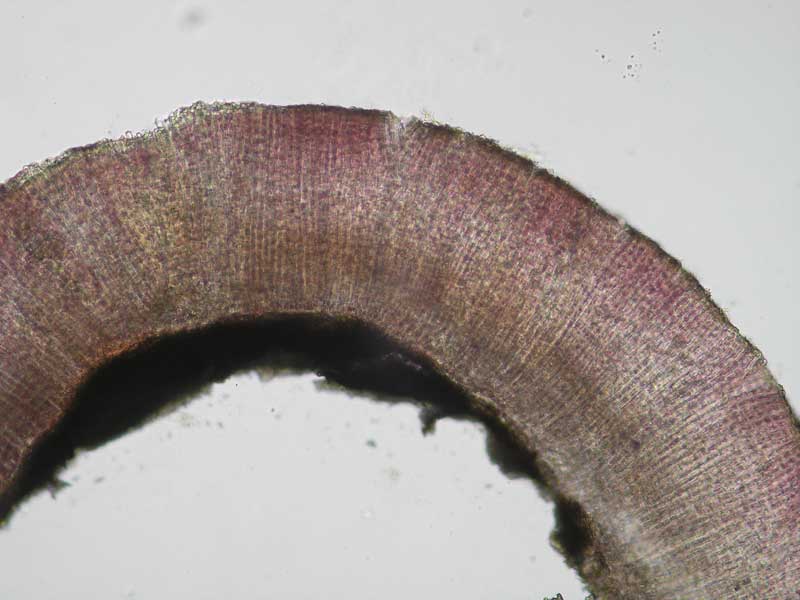A red seaweed (Cruoria cruoriiformis)
Distribution data supplied by the Ocean Biodiversity Information System (OBIS). To interrogate UK data visit the NBN Atlas.Map Help
| Researched by | Morvan Barnes | Refereed by | Admin |
| Authority | (P.L.Crouan & H.M.Crouan) Denizot, 1968 | ||
| Other common names | - | Synonyms | Cruoria cruoriaeformis |
Summary
Description
Cruoria cruoriiformis is a non-coralline crustose red alga. When alive, its crusts are bright red in colour and have a velvety texture but become smooth and burgundy in colour when dry. Although very thin at the growing margins, the crusts of Cruoria cruoriiformis are typically 110-320 µm thick in the central regions. It is closely and firmly stuck to the substratum and may be up to 2 cm in diameter. At a microscopic level, the thallus takes its form as a single layer of radially-arranged basal cells, from each of which rises an erect filament.
Recorded distribution in Britain and Ireland
Cruoria cruoriiformis is usually restricted to subtidal maerl beds in the western and south-western British Isles and around the coast of Ireland. Notably absent from most western Scottish maerl beds.Global distribution
-Habitat
Cruoria cruoriiformis is often associated with sublittoral maerl beds and can be locally abundant on the thalli of loose-lying maerl species such as Lithothamnion corallioides. It has equally been found to inhabit cobble substrata.Depth range
-Identifying features
- Crustose red alga.
- Crust is bright red, with a squashable, velvety texture.
- Crust up to 2 cm in diameter and 110-320 µm in thickness.
- Thallus is single layered with sparsely-branched erect filaments.
Additional information
Reproductive development is essentially very similar to Cruoria pellita, although key reproductive features such as the carposporangial dimensions and tetrasporangial dimensions are much smaller in Cruoria cruoriiformis. This was one of the bases for discounting early claims (Denizot, 1968) that Cruoria cruoriiformis and Cruoria pellita might be growth forms of the same species.
Listed by
Bibliography
Blunden, G., Farnham, W.F., Jephson, N., Barwell, C.J., Fenn, R.H. & Plunkett, B.A., 1981. The composition of maerl beds of economic interest in northern Brittany, Cornwall and Ireland. Proceedings of the International Seaweed Symposium,10, 651-656
Denizot, M., 1968. Les algues floridées encroûtantes à l'exclusion des Corallinacéens. Privately published. Paris.
Hardy, F.G. & Guiry, M.D., 2003. A check-list and atlas of the seaweeds of Britain and Ireland. London: British Phycological Society
Howson, C.M. & Picton, B.E., 1997. The species directory of the marine fauna and flora of the British Isles and surrounding seas. Belfast: Ulster Museum. [Ulster Museum publication, no. 276.]
Maggs, C.A. & Guiry, M.D., 1989. A re-evaluation of the crustose red algal genus Cruoria and the family Cruoriaceae. British Phycological Journal, 24, 253-269
Datasets
NBN (National Biodiversity Network) Atlas. Available from: https://www.nbnatlas.org.
OBIS (Ocean Biodiversity Information System), 2025. Global map of species distribution using gridded data. Available from: Ocean Biogeographic Information System. www.iobis.org. Accessed: 2025-07-26
Citation
This review can be cited as:
Last Updated: 27/03/2008





